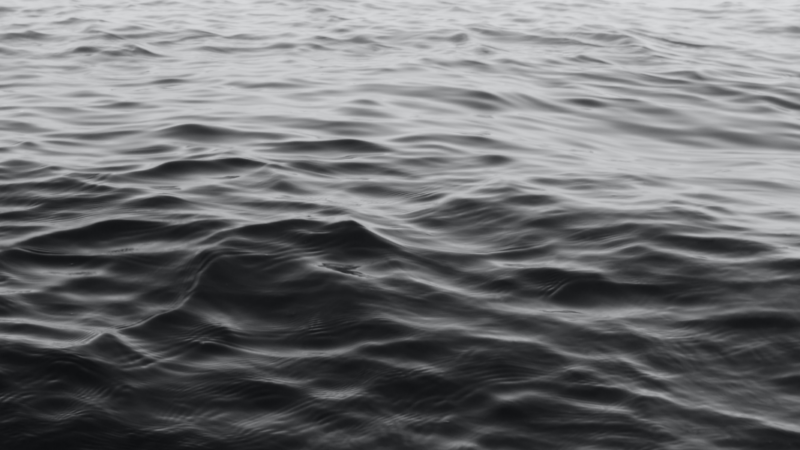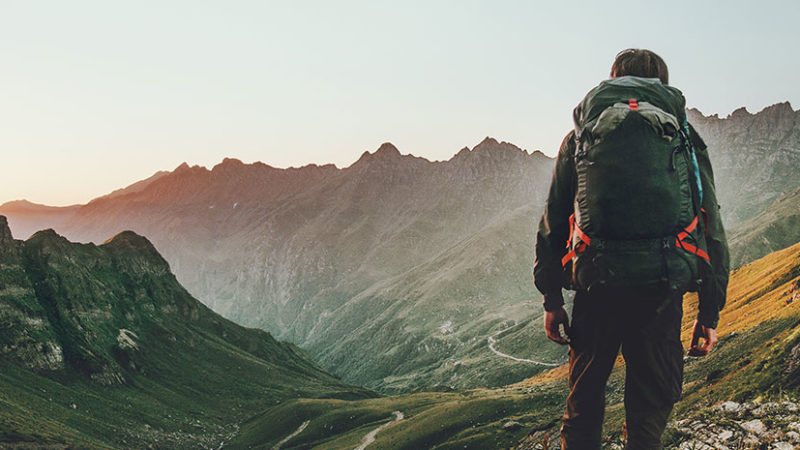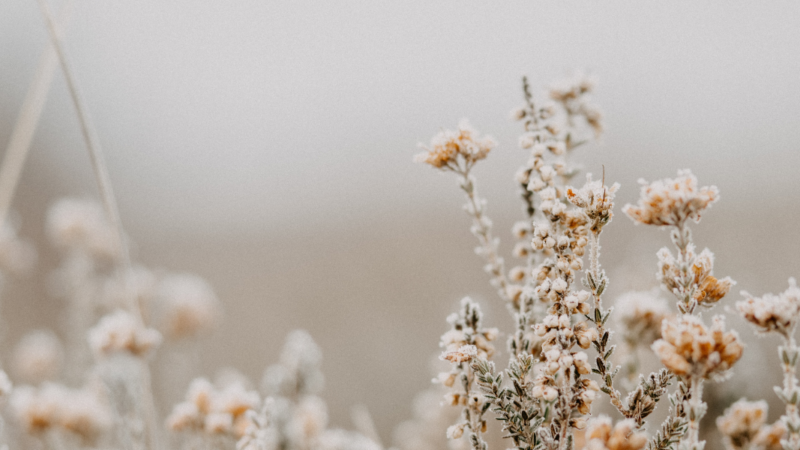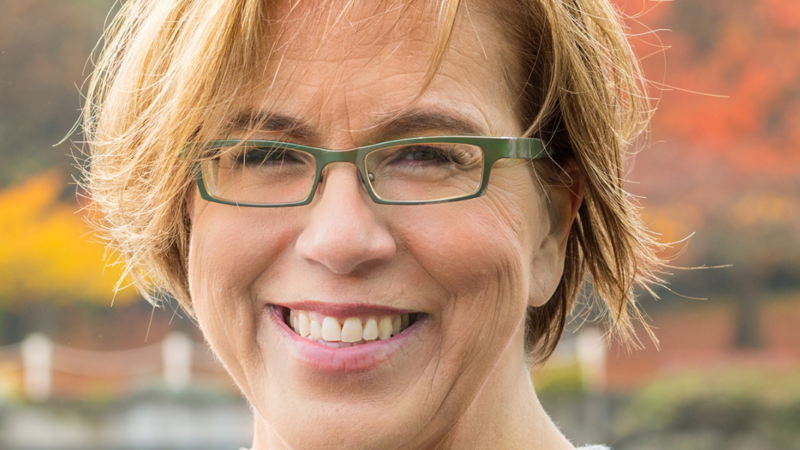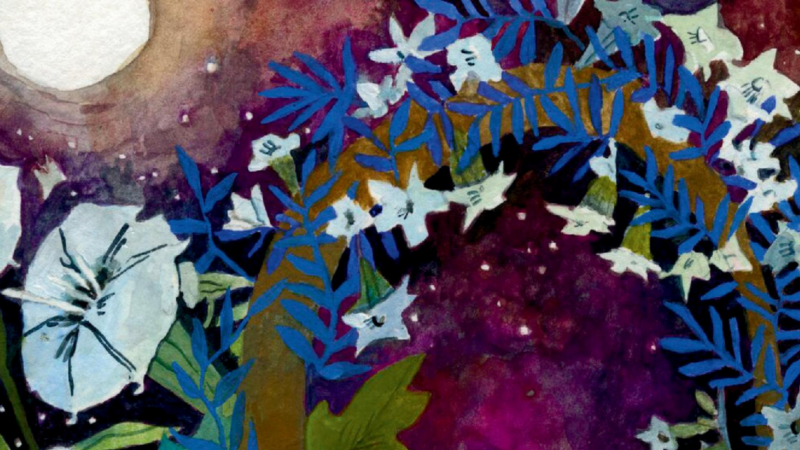However you need to grieve, that’s the right way for you
Grieving a cat—or any kind of grief—is not a one-size-fits-all experience (as though any experience or emotion were?). Some people can’t stop sobbing, while others reflect quietly. Some are comforted by hugs and rituals; others need solitude to process their loss.
There’s no “right” way to grieve, and there’s no “right” length of time. In fact, I don’t see a loss as something we “get over,” but rather something that becomes a part of our life experience. When our skin is gravely injured, it doesn’t go back to looking the way it did before; it heals, and we have a scar.
Loss changes the fabric of our lives; it changes the way we perceive and interact with the world. And like a scar, walking through grief (not trying to circumvent it) makes something in us stronger, more resilient. Grief is something to be healed, not to transcend.
Grief is nonlinear, too. Our human minds would love to make grief into a process that has a distinct beginning, middle and end…but in my experience, that’s just not true. Grief, like life, is messy and unpredictable. As Jon Kabat-Zinn writes, “You can’t stop the waves, but you can learn to surf.”
We all grieve, and for each of us, our grief is as unique as a fingerprint. If we try to avoid grief, it will redouble its strength and burst forth anyway. However you need to grieve, that’s the right way for you.
An original post by Sarah Chancey, the author of P.S. I Love You More Than Tuna, the first gift book for people grieving the loss of their feline friend. This originally appeared on morethantuna.com.
 Sarah Chauncey has written and edited for nearly every medium over the past three decades, from print to television to digital. Her writing has been featured on EckhartTolle.com and Modern Loss, as well as in Lion’s Roar and Canadian Living. She lives on Vancouver Island in British Columbia, where she divides her time between writing, editing nonfiction, and walking in nature. Learn more at morethantuna.com and sarahchauncey.com.
Sarah Chauncey has written and edited for nearly every medium over the past three decades, from print to television to digital. Her writing has been featured on EckhartTolle.com and Modern Loss, as well as in Lion’s Roar and Canadian Living. She lives on Vancouver Island in British Columbia, where she divides her time between writing, editing nonfiction, and walking in nature. Learn more at morethantuna.com and sarahchauncey.com.
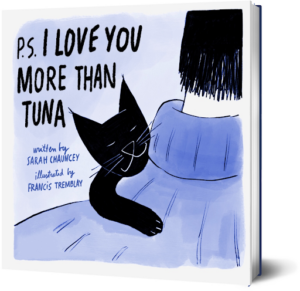
Amazon | Barnes & Noble | IndieBound | Bookshop
How to Stop Turning Your Back on Your Trauma
We Suffer Ahead of Time
There is a kind of pain that is born from the anticipation of something that we know will happen but has not yet happened. We suffer a lot for things that have not yet happened. We anticipate, in excruciating detail, the pain of a visit to the dentist or a planned surgery. We spend several months suffering the pain of giving birth. We suffer for the death of a loved one months before cancer takes their life. We suffer for things that do not yet hurt, in such a way that when real pain does arrive, our body and mind are already exhausted.
Our bodies are wise; this we have said already. Our bodies and our minds feel the impulse to repair the damage detected. When we feel pain, we activate a repair system with the objective of recovering the balance lost. But we must take care not to end up like Peter in the tale of “Peter and the Wolf”: he warned so many times about the wolf coming, without it being true, that when it did truly arrive, nobody believed him. If we activate the alert mechanism in the face of pain ahead of the time, then, when we need them the most, we won’t have any resources left to cope with it.
The source of emotional pain is often caused by:
- Adversity
- Frustration
- Disappointment
- Unexpected change
- Judgments and thoughts
- Reality
- Imagination
- Fear
- Anticipation
Suffering and adversity are just part and parcel of life. Any day we might experience the greatest and most unexpected of tragedies. But what really matters is not what could or might happen to us—which can be just about anything—but what is actually happening to us. When we speak about misfortune and adversity, we must speak about probabilities, not possibilities, namely the likelihood that any of the adversities we are exposed to might occur. Is there a chance that a piece of space debris might fall from outer space and split my head open? I don’t have the evidence to deny it. However, if I am going to be afraid of anything, in my case it would be the cows I meet in the mountains when I’m out for a run because it’s far more likely that I will be trampled by a cow than get hit by a piece of space debris.
So, if you ever ask yourself, “Why me?” remember that we are fragile; that we live in a hostile environment; and that sometimes, with the behaviors and the decisions that we make—or don’t make—we are taking risks that can lead us to adversity. However, at other times, the cruelest fate hits us with adversity.
Building a Wall Is Not the Solution
Some people think that the solution to live more at ease is to build a wall to defend themselves. Do not make that mistake; the wall will defend you from exterior aggressions, but it will also prevent you from enjoying the wonderful things around you. If you build a wall, you will prevent disappointment, but you will feel bitterly lonely. A wall can protect you from fear of change but will create an inability to adapt to different situations. The wall will provide you with safety, but it will also make you a person who is dependent on its protection; it will make you insecure and fearful of what will happen when that wall disappears. I encourage you to build, instead of a wall, a library full of resources to help you maintain the level of emotional strength that you need.
What’s more, when we attempt to protect ourselves by adopting strategies that are damaging, and when we wear armor, we disconnect emotionally from the people around us and from reality. Building a wall is never the solution because it will not protect us from that pesky space debris looming above our heads. Don’t forget: prudence is good, fear is not.
Reflection Exercise
I encourage you to do an exercise. Analyze the pain you are experiencing and try to identify its source. Don’t leave it for tomorrow. Don’t click to the next site just yet. Just pick up a notebook and a pencil, find a quiet place right now, and reflect. Take action, because it’s up to you to do something about this. Nobody will do it for you.
Learn more about this powerful practice of healing trauma in Kintsugi: The Japanese Art of Embracing the Imperfect and Loving Your Flaws by Tomás Navarro.
Tomás Navarro is a psychologist who loves people and what they feel, think, and do. He is the founder of a consultancy practice and center for emotional well-being. He currently splits his time between technical writing, training, consultancy, conferences and advisory processes, and personal and professional coaching. He lives in Gerona and Barcelona, Spain.
The Importance of Being Vulnerable
Emotions are the primary way we connect with others. In fact, for all the ways we perceive that sharing our emotions causes trouble, it’s actually worse for us not to. Sharing our truest, most vulnerable selves actually prevents us from the isolation that occurs when we miss out on the deep connection that only comes from this type of transparency. While social media can be a place of great support, it’s also caused a huge challenge. Because we’ve created a world in which we are addicted to showing our curated emotions, social media posts rarely tell the entire story. We’ve gotten accustomed to holding back our real selves—so much, in fact, that we have a totally distorted view of what’s “real.”
On a wet fall day as I was researching the negative effects of social media for this book, I noticed that a heavy sense of melancholy had fallen over me. Pushing myself to go out for a short walk in my beloved Central Park, only a block away, took every ounce of energy I had. When I was out, my sadness didn’t fade, but astounded by the colorful change of leaves, I felt inspired to take a handful of photos. They were the kind that Instagram is made of. When I got home, I decided to post them on social media. But earlier that day I had read something that was still with me: what happened when Tracy Clayton, host of the BuzzFeed podcast Another Round, asked people to repost photos they’d previously shared on social media, but this time, with the “real story” behind them. The photos that most of us would have longed for had painful stories behind them. One woman admitted to a terrible anxiety attack that took her all day to overcome, someone else shared the grief over a loss of a loved one stuffed under their smile at a party, and so on. What this shows us is that we are all running after a farce. But what’s worse, it shows that we’re all co-creating it.
So after a brief pause, I posted my gorgeous fall photos from the park with this: Full disclosure: Inspired by research for my next book about how social media posts screw us up by making everything and everyone seem OK even when they are not, I’m adding the truth here. These pictures were taken on a walk I dragged myself on because I felt sad today for no particular reason (except for that life is a lot sometimes).
I am typically not a sad person, nor am I one who shares it on social media when I am. I am very transparent on my author account, but for some reason, I am less so on my personal page. The response that day when I shared how I really felt took me by great surprise. Dozens of people I rarely heard from came out of the blue with comments, texts, and private messages. And what most of them were saying was, “I feel that way too.” In our technological age, we are more connected than ever before, but also lonelier and more isolated than ever before. I wondered that day, What if everyone stopped staying so busy pretending everything was perfect? What if instead of hiding our vulnerabilities to prevent the isolation we fear, we are driving it?
The bottom line is that, over and over again, I’ve learned that emotions are better in every way when they aren’t kept inside and to myself.
This is an excerpt from How to Heal Yourself From Depression When No One Else Can: A Self-Guided Program to Stop Feeling Like Sh*t by Amy B. Scher.
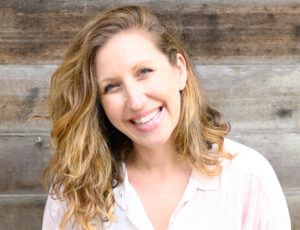 Amy B. Scher is an energy therapist, expert in mind-body healing, and the bestselling author of How to Heal Yourself When No One Else Can and How to Heal Yourself from Anxiety When No One Else Can. She has been featured in the Times of India, CNN, HuffPost, CBS, the Washington Post, Cosmopolitan, the Los Angeles Review of Books, Curve magazine, and San Francisco Book Review. Scher was also named one of the Advocate’s “40 Under 40.” She lives in New York City. For more, visit amybscher.com.
Amy B. Scher is an energy therapist, expert in mind-body healing, and the bestselling author of How to Heal Yourself When No One Else Can and How to Heal Yourself from Anxiety When No One Else Can. She has been featured in the Times of India, CNN, HuffPost, CBS, the Washington Post, Cosmopolitan, the Los Angeles Review of Books, Curve magazine, and San Francisco Book Review. Scher was also named one of the Advocate’s “40 Under 40.” She lives in New York City. For more, visit amybscher.com.
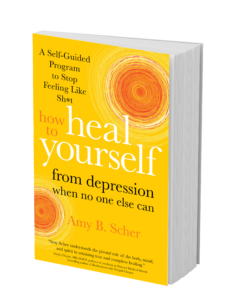
Learn More
Sounds True | Amazon | Barnes & Noble | Indiebound | Bookshop
Meet the author of . . . P.S. I Love You More Than Tuna
The Author
Sarah Chauncey is the coauthor of P.S. I Love You More Than Tuna along with illustrator, Francis Tremblay, coming October, 2020. She has written and edited for nearly every medium over the past three decades, from print to television to digital. Her writing has been featured on EckhartTolle.com and Modern Loss, as well as in Lion’s Roar and Canadian Living. She lives on Vancouver Island in British Columbia, where she divides her time between writing, editing nonfiction, and walking in nature. Learn more at sarahchauncey.com.
The Book

Our cats occupy a unique space in our hearts. When they’re gone, the loss can be devastating, the grief profound.
P.S. I Love You More Than Tuna gives us an opportunity to give friends, loved ones, or ourselves tangible comfort during the grieving period, when so many of us feel isolated and misunderstood after a beloved pet dies.
Send us a photo of your sacred space.

First Nation, Saysutshun Newcastle Island is an ancient forest and marine provincial park. Saysutshun, I’m told, means “training or preparation ground,” and indeed, for millennia before colonization, the Snuneymuxw brought healers to this small island to train “mentally, physically, and spiritually.” I knew none of this history when I first began walking long stretches of the uninhabited island’s 13.6 miles of trails. I only knew that the island seemed to lift away anything that wasn’t essential, easing my mind and making way for creative ideas to flow. I’d walk a bit, then sit and meditate, write for a while, then walk some more. This bench, under a circle of seven trees, became my favorite writing and meditation spot. The moss-covered trees became my friends, teaching me to stay rooted when things around me change. As I wrote in a 2016 essay about the island, “I have become a literal tree-hugger, and even—when nobody is looking—a tree-kisser.”
What was your favorite book as a child?
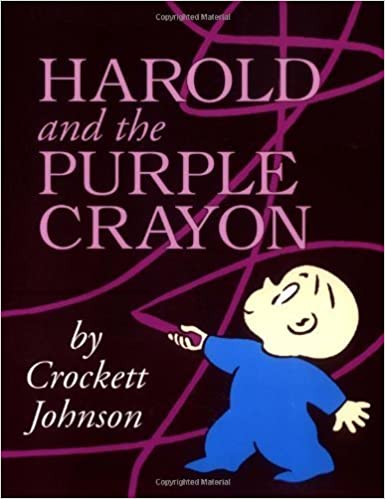
I was a total bookworm as a child. Instead of playing games at recess, I preferred to curl up under my desk and read. Of all the books I read—from every Encyclopedia Brown to Freaky Friday to The Short Stories of Ernest Hemingway (I was a precocious kid), the book with the most enduring impact was also the simplest: Harold and the Purple Crayon. I was enchanted by Harold’s adventures, amazed by his ability to draw his way out of every obstacle and ultimately find his way home. Long before I began seeing this as a metaphor for creativity (and life!), this story appealed to me. Fifty years later, I continue to find new layers of meaning in this little book. It’s a simple yet profound testament to the power of imagination and creativity.
What is one unexpected thing or habit that inspires your writing practice?
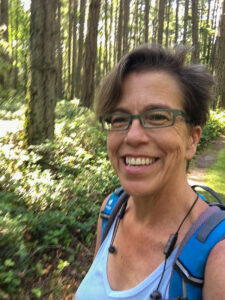
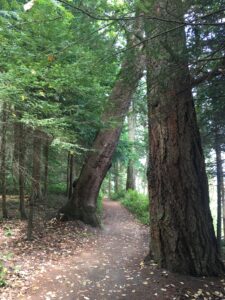
Walking in nature is my creative “secret sauce” and the central practice to my writing. Several years ago, I realized that although my role in this world is as a writer, my job is to bring myself back into presence, over and over, to get into a place where words can flow through me. I walk to get out of my mind and into my body. I come into fierce presence by noticing the rain on my face, salal berries ripening into deep blue, or the texture of earth beneath my feet. When my body is occupied by walking, ideas bubble up from my subconscious. Whether I’m looking for ways to trim an over-long essay or searching for words to evoke a hard-to-articulate experience, as soon as my legs find their rhythm, ideas begin to flow.
Learn More

Sounds True | Amazon | Barnes&Noble | Bookshop | Indiebound
Planting a Moon Garden
What does the moon have to do with flower essences and ritual? As we discussed in an earlier chapter, the moon represents a time before the dominant culture came into power. While the moon has no gender, it is a metaphor for the divine feminine and a symbol for the creative, the intuitive, the unconscious, and the shadow. Before the Gregorian calendar came into use in the sixteenth century, many cycles of time were measured on a lunar basis, as are the Islamic, Chinese, and Jewish calendars today. All ancient agriculture was organized around lunar and astrological transits, which is one of the basic practices of biodynamic farming today. Many of us feel a fascination with the moon, and I feel it beckons us back to a different consciousness, where much healing potential awaits.
Creating altars or sacred spaces outdoors can be another place for ritual work. While I can’t have a moon garden in the city, I can have a few lunar plants in my windowsill to catch the moonlight.
Not all flowers bloom in the sunlight. Some plants prefer the darkness, opening to the night. Moon plants can be cultivated in any terrain. Many night bloomers are also very fragrant. I consider all plants medicinal to some degree; however, some of the moon garden plants may be more therapeutic than others. These can also be plants that you use for making your own flower essences. Or, if you like to make dried sticks of herbs to burn, you can use the plants from your moon garden, such as mugwort.
You can see the lunar signature of mugwort by observing the underside of the leaf, which is silver. The Latin name for it is Artemisia vulgaris; Artemis, if you remember, was the Greek goddess of the moon! Plants with light and white blooms work best, as well as gray and silvery leaves.
Here are some perfect moon garden plants:
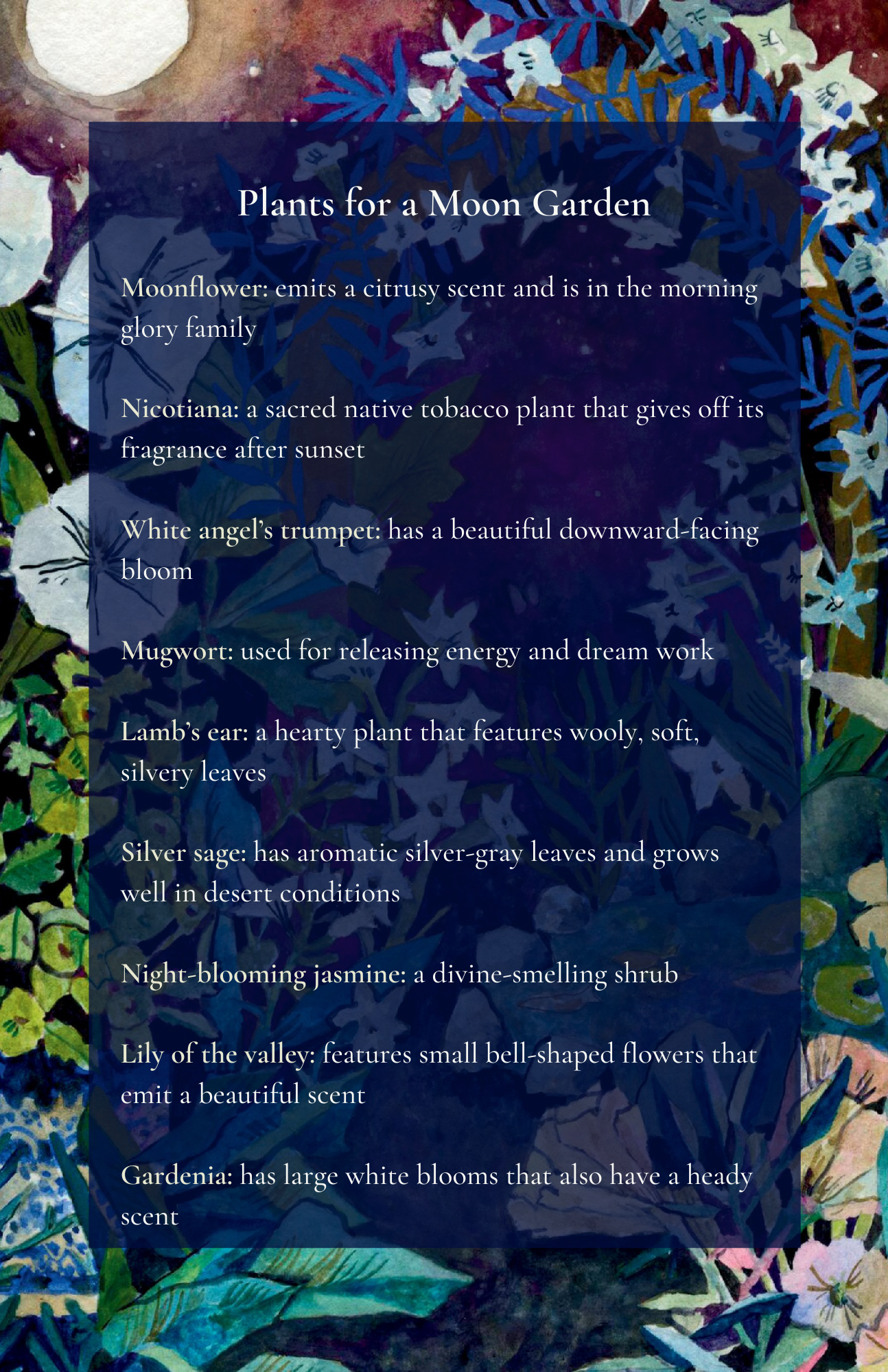
The video on how to make your own flower essence medicine can be found here.
This is an excerpt from The Bloom Book: A Flower Essence Guide to Cosmic Balance by Heidi Smith.
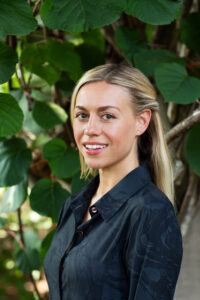 Heidi Smith, MA, RH (AHG), is a psychosomatic therapist, registered herbalist, and flower essence practitioner. Within her private practice, Moon & Bloom, Heidi works collaboratively with her clients to empower greater balance, actualization, and soul-level healing within themselves. She is passionate about engaging both the spiritual and scientific dimensions of the plant kingdom, and sees plant medicine and ritual as radical ways to promote individual, collective, and planetary healing. She lives in Brooklyn, New York, with her partner and two cats. For more, visit moonandbloom.com.
Heidi Smith, MA, RH (AHG), is a psychosomatic therapist, registered herbalist, and flower essence practitioner. Within her private practice, Moon & Bloom, Heidi works collaboratively with her clients to empower greater balance, actualization, and soul-level healing within themselves. She is passionate about engaging both the spiritual and scientific dimensions of the plant kingdom, and sees plant medicine and ritual as radical ways to promote individual, collective, and planetary healing. She lives in Brooklyn, New York, with her partner and two cats. For more, visit moonandbloom.com.
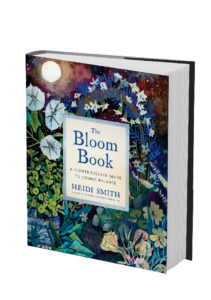
Learn More
Sounds True | Amazon | Barnes & Noble | Bookshop
Topophilia: A Love and Appreciation for Where We Live
Topophilia
Rewilding allows you to see your environment with new eyes, sometimes as if for the very first time. You become more intimate with all its life-forms and sometimes see beyond the visible, connecting with a greater spirit, or presence. In his book The Nature Principle, Richard Louv discusses “place blindness,” which afflicts people who live so much of their lives indoors or in front of screens that they do not look up to see the land they live on. As with a psychological state such as inattentional blindness or perceptual blindness, these people do not perceive what is right in front of them, whether that is a horizon, a rock, a landscape, or a tree. Whether they are overwhelmed, overstressed, or preoccupied by other stimuli, in effect they become sealed off from the elements, the seasons, and the real world of the living earth, and they lose out on the benefits of a vibrant and reciprocal relationship with nature.
Because place blindness inevitably leads to a disconnection with the living earth, it also leads to a lack of caring and interest in the planet’s well-being. Future generations will not value and care for the earth if they have little or no actual relationship with it. People will not work to reverse climate change if they are so rarely outside that they have no embodied experience of its reality. So how do we overcome place blindness? We embrace mindfulness and take it outside with us. The more time we spend out on the land, exploring and learning about the different plants and animals, the natural history and ecology, and simply enjoying and getting to know the contours of the living earth, the more bonded we’ll feel to the places we call home. The more intimate we become with the land, the more we’ll grow to love and cherish it. The word land can be a vague, general term, but as you get to know a place, you discover its individuality, its individual trees, stones, birds, and landmarks. Walking along a favorite trail as the months and years go by, I watch little saplings grow. As you walk, I encourage you to bring your full, penetrating awareness to the reality of life as it is. This kind of intimacy with place is as natural as can be. We’ve lost it only in the last hundred or so years. But we can get it back and be enriched again.
Some call this love of land topophilia. Every spot on a map has a unique quality and personality. Bioregionalism is a movement that seeks to understand the watersheds, geography, ecology, natural history, human history, and other layers of knowledge that make up the richness of a place. Climate change compels us to become more bioregional so that we can address some of the nasty repercussions of a society crumbling under the compounding costs of extreme weather events, food production problems, mass migrations, rampant pollution, and social strife.
Stewardship begins with you and me.
Tips for Overcoming Place Blindness
- Walk outside. Whether you live in a populated neighborhood or in a more isolated area, walk outside every day. While you walk, open your senses, connect with your breath, and pay attention to movement on the land and in the sky.
- Become an amateur naturalist. Learn about the trees, plants, animals, insects, and other features of the land where you live. Use field guides to learn what trees grow near your home. Learn about the wild edibles that grow near you. Pay attention to the birds. Are there watersheds nearby? Where does the water flow from? Where does it flow to?
- Join local organizations that support the land. Make friends with local conservation, land management, and other environmental organizations that are active in your area. Perhaps there are walking or hiking groups, foraging clubs, craftspeople, or other groups you can learn and explore with.
- Limit your screen time. When you are outdoors, set a strong intention to experience the earth directly through your own senses. Silence your phone and put it away. Resist the urge to capture everything with a picture and instead take mental pictures of what you see. Practice letting go of the need to document every experience. See if you can reconnect with what it is like to experience life. Slow down and notice, as if for the very first time.
This is an excerpt from Rewilding: Meditations, Practices, and Skills for Awakening in Nature by Micah Mortali.


